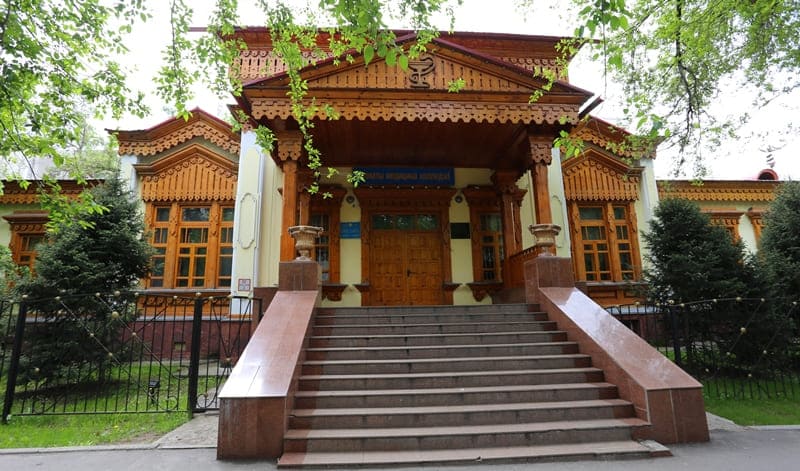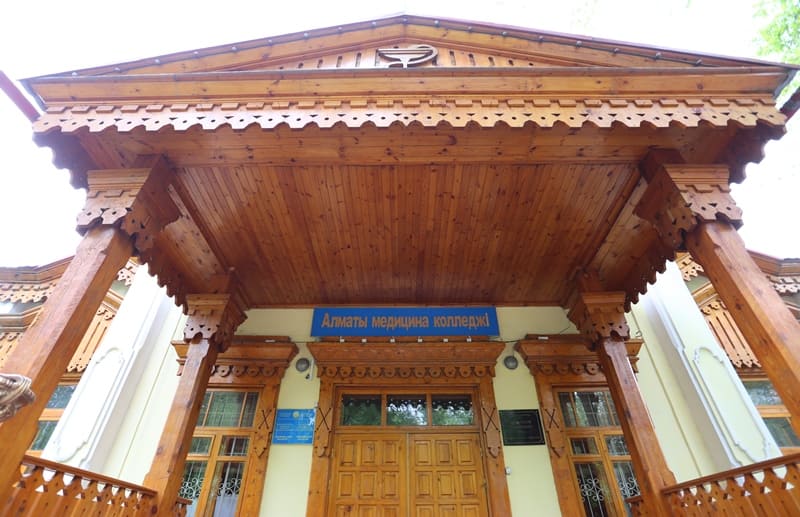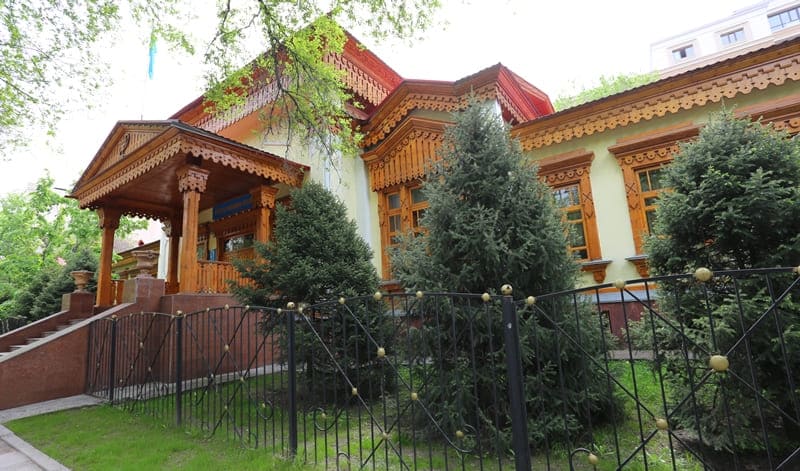You are here
Almaty City History Museum.

Unique exhibits of Almaty museums.
"New buildings are erected exclusively from spruce wood in a frame type with stoves more or less firmly attached to the walls. Thus, a fairly large city with a population of about 25 thousand is lost in the greenery of gardens, and can be seen only by driving into the streets. Freer from plantings are two market squares, where you can see a multi-ethnic crowd of natives (Sarts, Taranchi, Kirghiz, Dungans). Verny, as a regional city, is the center of administration and educational center of Semirechye."
Sapozhnikov Vasily Vasilyevich. "Essays on Semirechye". 1904.
Excursion to Almaty City History Museum.
Almaty City History Museum is located at an altitude of 824 meters above sea level, located at 132 Kabanbay Batyr Street, in square of S. Seifullin, Nauryzbay Batyr and T. Shevchenko Streets, 65 meters southeast of «Rixos Almaty» Hotel, across road in southern part of Karagayly Park (Pine Park) in Almalinsky District of Almaty.
The Almaty City History Museum is located in the former building of the Verny Children's Shelter. The Almaty Museum of History and Local Lore was opened in January 2001. Its collection consisted of a small number of photographs and exhibits left over from the closure of the Almaty History and Reconstruction Museum, created in the 1980s.
Later, the Almaty Museum of History and Local Lore was renamed the Almaty City History Museum, and in 2016 it became known as the Almaty City Museum. The Almaty Museum includes the dynastic royal burial complex "Boraldai Saka burial mounds", which has preserved the cultural and natural landscape.
In 2016, the museum moved to the complex of buildings of the former Vernoye orphanage. The exposition of the Almaty City History Museum has more than 40,000 exhibits. Among them are works of fine art, unique collections of Kazakh ethnography, as well as ethnography of representatives of the peoples currently living in Almaty, collections of household items from various eras and cultures, numismatics, photos and documents.
Since August 2017, the museum has been participating in the "Museum for All" program. Special interactive tours have been created for wheelchair users and people with visual and hearing impairments. The museum has modern means of displaying exhibits, allowing for the demonstration of projections of historical video materials and rare artifacts in the form of holograms.
History of building of Almaty City History Museum.
A one-story wooden rectangular log building on a rubble foundation with a basement. The main facade has a symmetrical three-part structure highlighted by projections. The plasticity is created horizontally by a strip of frequent windows; vertically by pilasters in the piers.
The windows are framed by developed carved platbands resting on brackets. The main high-rise entrance is emphasized by a wide staircase. In the side wings of the building there was a school with three departments and a workshop for cutting and sewing for girls and shoemaking and bookbinding for boys.
The projections housed living quarters. In the back southern courtyard there was a garden, vegetable garden and flower beds (now the Dynamo stadium), in front of the main entrance a garden was planted by students (now Sosnovy Park).
In Soviet times, the five-domed Alexander-Mariinsky Church was demolished along the axis of the central projection. The interior of the building has preserved the decoration of the walls and ceiling in the form of stucco elements. On November 10, 2010, a new State List of Historical and Cultural Monuments of Local Significance in Almaty was approved, at the same time as all previous decisions on this matter were declared invalid.
This Resolution retained the status of a monument of local significance for the building of the Vernoye Orphanage. The boundaries of the protected zones were approved in 2014.
History of Almaty City Museum.
The city orphanage was opened in 1878. The building was constructed in 1892 by the architect P. Gurde for the Vernoye Orphanage. During the Soviet era, various government agencies were located in the building of the former orphanage: in 1929 - the Kazakh Central Executive Committee, the Council of People's Commissars, and the State Planning Committee of the Kazakh ASSR.
At a later time - Children's Clinical Infectious Diseases Hospital No. 1.
From 1981 to 2016 - the City Medical School (now the Medical College).
In 2009, Kazrestavratsiya carried out the restoration of the building.
Almaty Museum is represented by 11 halls, among them:
"Ancient History of Almaty",
"Medieval History of Almaty",
"At the Origins of Kazakh Statehood",
"Ethnography of Zhetysu",
"Vernoye Period of Almaty History",
"Almaty in the XXth Century",
"Development of Culture and Art",
"History of Mountaineering",
"Zheltoksan",
"Almaty and the Leader of the Nation",
"Model of Peace and Harmony".
The idea of the museum based on the expositions is the historical development of the city over the decades since its formation. The halls and stands of the museum clearly present the culture, life of the city's residents from the ancient settlement of Talkhiz to the modern city.
Address of Almaty City Museum.
050012. Almaty, Kabanbai Batyr Street, 132
Open for visitors:
Tuesday through Sunday from 10:00 to 19:00
Monday – closed.
Phones:
+7 (727) 272 43 21
+7 (727) 267 59 05
Geographical coordinates of Almaty City History Museum: N43°14'55 E76°56'10



Authority:
https://ru.wikipedia.org/wiki/%D0%9C%D1%83%D0%B7%D0%B5%D
Photos by:
Alexander Petrov.







